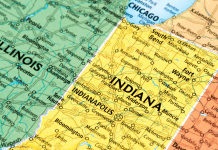“Today’s rule is part of the Trump Administration’s goal to revitalize and modernize our nation’s industrial operators while maintaining clean air progress,â€Â said EPA Administrator Andrew Wheeler. “This rule incentivizes installation of new technologies that can both improve operator efficiency and reduce air pollution.â€
In March 2018, the EPA Administrator issued a memorandum titled “Project Emissions Accounting Under the New Source Review Preconstruction Permitting Program.†In the memorandum, the Administrator explained that the agency interprets current NSR regulations to allow emissions decreases as well as increases from a project to be considered at Step 1 of the NSR applicability process. This rule provides further clarity and certainty to the regulated community regarding the permissibility of project emissions accounting.
EPA expects that allowing project emissions accounting will reduce regulatory burden — saving time and money without sacrificing environmental protection. Where a review of both the emissions increases and the emissions decreases associated with a proposed project indicates that the project will not result in a significant emissions increase, this review would end the applicability evaluation. In general, the project could then proceed under a minor source permit as applicable. Those state and local air agencies that implement the NSR program through EPA-approved State Implementation Plans (SIPs) need not allow for project emissions accounting nor are they required to submit SIP revisions or stringency determinations to EPA as a result of this action.
Under this Administration, EPA has taken numerous steps to clarify and improve New Source Review (NSR) permitting requirements including guidance to:
• Communicate how EPA would apply and enforce the Actual-to-Projected Actual Emissions Applicability Test;
• Clarify the meaning of “Common Control†and “Adjacent†in the context of determining the scope of a stationary source;
• Identify additional circumstances under which an area may be excluded from “Ambient Airâ€;
• Provide PM2.5 and Ozone Significant Impact Level (SIL) guidance; and
• Provide guidance on plantwide applicability limits or PALs.
EPA has also issued final actions to complete the reconsideration of prior agency actions on project aggregation and reasonable possibility in the context of Clean Air Act permitting and to streamline tribal oil and gas permitting activities. All of these actions will improve regulatory certainty and remove unnecessary obstacles to projects aiming to improve the reliability, efficiency, and safety of facilities while maintaining air quality standards.






